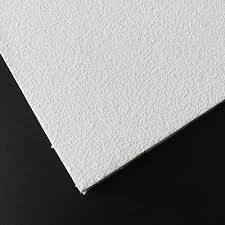Dec . 05, 2024 03:22 Back to list
Hinged Access Panel for Easy Ceiling Maintenance and Quick Repair Solutions
Understanding Hinged Ceiling Access Panels A Practical Solution for Maintenance and Access
In modern construction and renovation projects, accessibility to concealed spaces is often a key consideration. One practical solution to this challenge is the installation of hinged ceiling access panels. These panels provide a straightforward yet effective way to allow access to various installations located above ceilings, such as electrical wiring, plumbing, ductwork, or HVAC systems.
What is a Hinged Ceiling Access Panel?
Hinged ceiling access panels are essentially removable sections of the ceiling that are designed to open and close easily. They are typically framed structures that blend seamlessly into the ceiling design, providing a discreet access point without compromising the aesthetics of the space. The hinged design allows the panel to swing open, granting technicians or maintenance personnel adequate space to perform their tasks without the need for extensive demolition or disruption.
Essential Features of Hinged Access Panels
1. Durability Most hinged access panels are built from robust materials such as steel or high-grade plastic, ensuring resilience against wear and tear. They are designed to withstand the rigors of both everyday use and the occasional heavy-handedness that might arise during maintenance work.
2. Ease of Installation The installation process for hinged access panels is generally straightforward, making them a popular choice for both new constructions and renovations. Most panels come with installation kits or detailed instructions, allowing contractors to install them quickly and with minimal disruption to the surrounding area.
3. Variety of Designs Hinged ceiling access panels come in a variety of designs and finishes to match different ceiling types and styles. From textured panels that mimic drywall finishes to sleek metal options, these panels can be customized to fit seamlessly into any decor.
hinged ceiling access panel

4. Safety Features Quality access panels often include safety features such as a locking mechanism or spring-loaded hinges, ensuring that they remain securely closed when not in use and can prevent unauthorized access to sensitive areas.
Benefits of Using Hinged Ceiling Access Panels
1. Convenient Access The primary benefit of these panels is their ability to provide easy access to critical systems and components that require regular maintenance. This means that technicians can quickly reach necessary areas, reducing downtime and service interruptions.
2. Cost-Effectiveness By simplifying access to infrastructure such as plumbing and electrical systems, hinged access panels can lead to significant cost savings. Routine maintenance can be performed more efficiently, and potential problems can be addressed before they escalate into major repairs.
3. Aesthetic Integration Unlike traditional access methods that may require cutting into ceilings or walls, hinged access panels are designed to blend in. This means that homeowners and businesses can maintain a clean and organized look in their spaces without sacrificing functionality.
4. Versatile Applications These panels can be utilized in a variety of settings, including residential homes, commercial buildings, hospitals, schools, and industrial facilities. Their versatility makes them suitable for any environment where ceiling access is necessary.
Conclusion
Hinged ceiling access panels represent a smart solution for maintaining the integrity and functionality of buildings. By allowing quick and easy access to critical systems, they enhance the efficiency of maintenance processes while seamlessly integrating with architectural designs. Whether in new constructions or during renovations, incorporating hinged access panels can significantly improve access to concealed spaces, providing practical benefits for both property owners and maintenance teams alike. As the importance of efficient building maintenance continues to grow, hinged ceiling access panels will remain a vital component of modern infrastructure.
-
Durable Ceiling T Grid Systems | Easy InstallationNewsAug.29,2025
-
PVC Gypsum Ceiling: Durable, Laminated Tiles for Modern SpacesNewsAug.28,2025
-
Pvc Gypsum Ceiling Is DurableNewsAug.21,2025
-
Mineral Fiber Board Is DurableNewsAug.21,2025
-
Ceiling Tile Clip Reusable DesignNewsAug.21,2025
-
Ceiling T Grid Modular DesignNewsAug.21,2025







